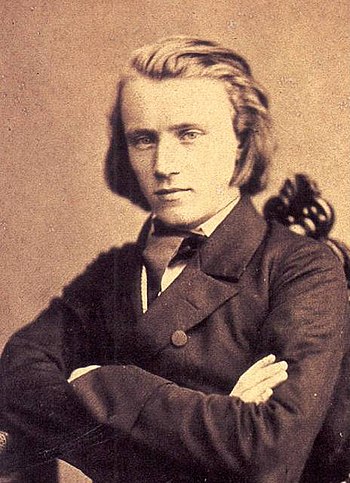Jan Pieterszoon Sweelinck (1562-1621) was a legendary Dutch Master organist, composer, and pedagogue of the 17th century. He is most renown for not only for his great polyphonic choral writing but also for being a founder of the North German Organ School. He is also frequently called "Maker of German organists" because of his influential teaching activities that helped propel and flourish the renown North German Organ School. His most famous students include Samuel Scheidt, Heinrich Scheidemann, Melchior Schildt, Jacob Praetorius II, and Anders Duben among many others.
Sweelinck's keyboard style was influenced mostly by two major trends: Italian vocal polyphony and English virginal composers. From Italians the composer inherited beautiful linear counterpoint writing with mostly constant number of parts in the composition. From the English virginalists, he took over their virtuosic figurational writing which consisted of frequent passages, runs, arpeggios, flourishes, diminutions and various other types of figuration.
Ballo del Granduca is one of today's favorites pieces by Sweelinck. Its authenticity is doubtful as it might have been composed by Samuel Scheidt. The title of the piece refers to the Balleto (or little dance of joyful character of the Renaissance) of the Great Duke. It is a set of theme on a dance tune and 4 variations, although the opening section is called variation 1. Variation 1 consists of many colourful and joyfully sounding chords with a characteristic long-short-short rhythms. It contains 5 sections each one with a duration of 4 measures and ends with strong closed cadences at the end of each phrase. The cadences are in G major (the tonic key of the piece), C major, A minor, G major, and G major. The first and the fifth phrases are repeated.
The second variation features many passages and runs in the right hand part with eighth or sixteenth notes rhythms while the left hand plays chordal accompaniment in two or three voices. In variation 3, the hands switch: eight note diminutions are transferred to the left hand part and the accompanimental role is given to the right hand part. The 4th variation contains most of the virtuosic sixteenth note passages and diminutions in the right hand part which are so characteristic of Sweelinck's style. The variation cycle ends (variation 5) with eight note motion in the right hand part (in double thirds and sixths). Technically speaking, this is the most challenging variation and therefore a culmination of the entire set of variations.
By the way, do you want to learn to play the King of Instruments - the pipe organ? If so, download my FREE video guide: "How to Master Any Organ Composition" here: http://www.organduo.lt/organ-tutorial.html Article Source: EzineArticles |

















